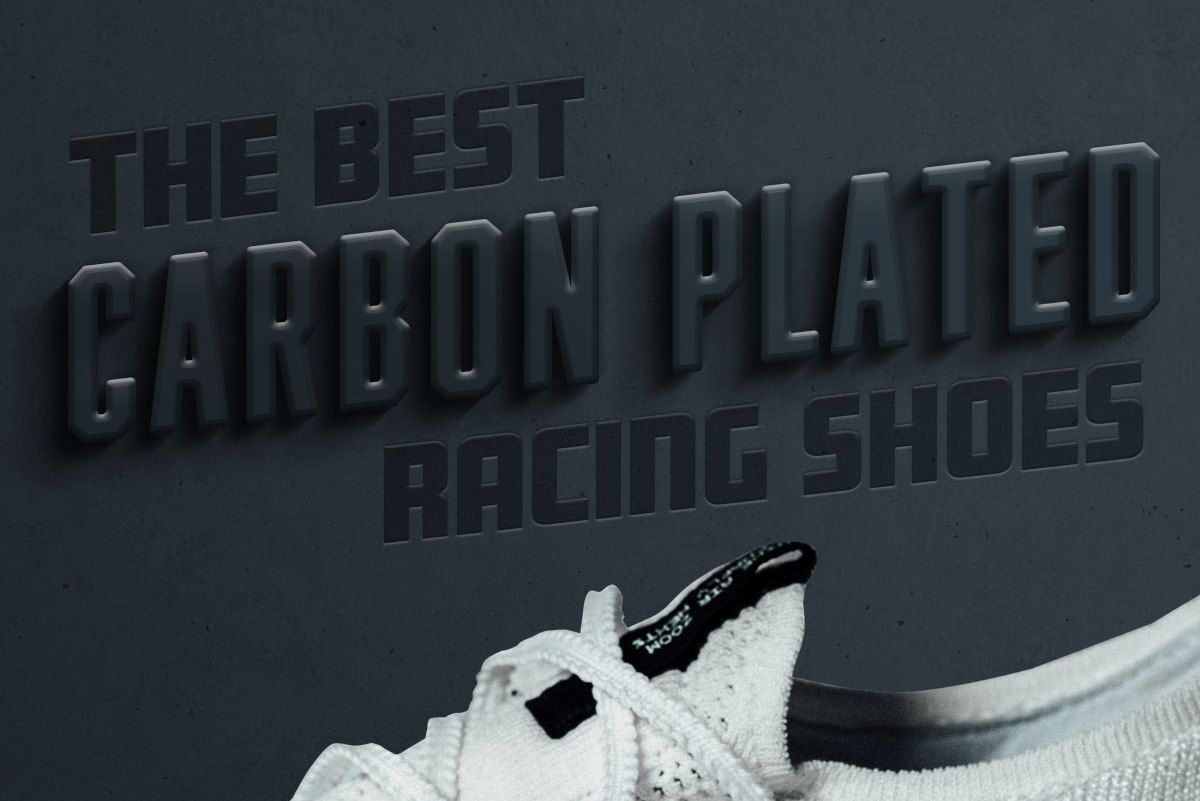
We independently review everything we recommend. When you buy through our links, we may earn a commission.
We run miles upon miles in the shoes to give you our favorite picks
For that extra propulsion and stability during race efforts
Primarily race day (but also daily trainer and tempo)
We review a lot of shoes here at Believe in the Run. Not to play favorites, but we’d be lying if we said that taking carbon-plated racers out at fast paces isn’t one of the most fun things on our “to do” list. Since the boom of carbon use began, the running world has seen some impressive innovations in what a shoe can do and, more importantly, what a shoe can do for you. On the flip side, this is the most expensive tier of running shoes on the market.
It’s commonplace for carbon-plated racing shoes to retail for over $200, and the best of the best are approaching the $300 mark. Racing shoes are an investment in results, so it’s important to be confident not only in your purchase but also at the starting line. Here are our favorite carbon-plated racing shoes with some quick thoughts from our team.
While most of these are reserved for race day or speed efforts during training, there are a couple outliers that can be used for daily training or simple speed efforts.
Oh, and yes, it counts as 10 shoes because the Edge+ and Sky+ are paired up, and so are the Takumi Sen 8 and Adios Pro 3.
Race day
7.9 oz. (223 g.) for a US M10.5,
6.2 oz. (177 g.) for a US W7.5
39.5 mm heel, 31.5 mm forefoot (8 mm drop)
The Endorphin Pro has always been just below the top tier of racers, with its firmer foam and slightly overbuilt upper, but not anymore. This is a true speedster, and it’s a full reboot from the last version.
Above all else, Saucony kept the great upper from the Endorphin Pro+, which means this baby is super breathable. It’ll absolutely keep your feet cool, and the iridescent pink upper is one of our favorite colors of the year. There’s ample room for a variety of feet, and even Wide-Foot Jarrett got in on the fun. Saucony added extra foam to the midsole and made the platform wider overall for better stability — noticing a theme?
I know it’s tough to list price as a deciding factor when it comes to super shoes, but the Endorphin Pro 3 makes a good argument. It’s $25 cheaper than most other competitors ($50 less than the Alphafly and most others), and it’s finally a bonafide race day pick.
Oh, and we gave it our Best In Gear award for the top race day shoe of 2022.
Need we say more?
Race day
7.9 oz. (223 g) for a US M9
39.5 mm heel, 35 mm forefoot (4.5 mm drop)
A few months ago, we’d never imagined that a Mizuno shoe would be on this list, but here we are with quite possibly one of the best race day shoes… period. The Rebellion Pro flips the script on the stale Mizuno story, offering what will certainly be one of the true gems of 2023.
The construction and design are absolutely wild, with a drastic heel bevel serving as a backdoor bypass of the World Athletics race-day rules (despite a true 50+ mm midsole stack, the shoe is still race legal by World Athletics standards thanks to the heel angle). The result of this double layer of Enerzy Lite on the bottom, Enerzy Lite+ on the top, and a carbon-infused nylon plate in between is a level of comfort and propulsion that we’re not sure anyone else has replicated.
It’s not perfect — the toe box is far too cramped and it’s a bit unstable — but it’s pretty damn close, and it’s a sure sign that Mizuno is starting to take running innovation seriously again.
The limited-edition Kakizome PB colorway (based on traditional Japanese ceremony where people write their first calligraphy of the year) releases in March 2023.

$180
Daily trainer/long run/recovery
11.5 oz. (326 g) for a US M10.5 2E
47 mm heel, 39 mm forefoot (8 mm drop)
Daily trainers with carbon fiber plates are more rare than a 1999 Charizard TCG holo, but there are a few out there, and you can actually catch them all.
But there’s none that beat the New Balance SC Trainer. As a team, we may have logged more miles in this shoe than any other in the past year, because it’s that good.
Drawing from the carbon-fiber standard of the Supercomp line and combining it with as much FuelCell goodness that one shoe can handle, the SC Trainer has a race day feel in a long run package. The stack height itself (47 mm) is illegal for race days by World Athletic standards, but the good news is that nobody cares about you using it because you’re not running a 2:10 marathon anytime soon. That stack height, combined with the rocker geometry and the EnergyArc full-length carbon-fiber plate take this shoe to a mutant level of daily trainers. What you get is a rolling ride and tons of comfort, combined with a big boost of energy return for those long efforts.
We love the fit of the upper– it’s sock-like, but not overly snug. Though some people have complained about the heel collar area giving them hotspots, we didn’t experience it during our long testing period.
The only downside here is the weight of the shoe– it’s one of the heaviest daily trainers out there. But the roll of the shoe combined with the plate negate that for the most part. It’s also surprisingly stable thanks to its wide base and underfoot cutout. All that to say, the New Balance SC Trainer is a game-changer of a shoe and so far, there really isn’t anything like it. For long runs to a great first-time marathon shoe, it covers all the bases.
Later in 2023 we’ll get the second version which loses a lot of weight, but also a lot of stack. We’re a bit nervous that it may lose some of its magic, but won’t know ’til we try it. For now, we’ll play the hit points that we have.

$250
Race day
8.4 oz. (238 g) for a US M10.5/W9.5 (Unisex sizing)
39.5 mm heel, 33 mm forefoot (6.5 mm drop)
The Adios Pro has incrementally gotten better over the years and it all comes together (almost) in the Adios Pro 3. With a wider base, more foam in the forefoot, and a reconfigured EnergyRod system, this thing is a bonafide racer. It’s more stable than last year’s version, which was precarious in any situation aside from turbo-blaster-full-speed-ahead mode. The toe-off feels more propulsive, despite the fact that the landing seems more stable and the foam a bit more comfortable. Thank you to whichever Adidas designer made sure an extra 2mm of height and higher drop made its way into this shoe.
Also, that Continental rubber outsole is straight-up black and neon green magic. No idea how it can grip so well, but it’s the best in the game.
All is not guns and roses, however– we did have some issues with the upper. Namely, that there’s too little structure, the tongue has a tendency to fold under itself, and the lacing is a Mensa-level brain teaser. If you figure it out, you should be good, but it is not a task for the weak at heart, or for jump-out-of-bed runners like me who don’t want to take 15 minutes to tie my shoes.
Side note: if you want a “budget” version of this shoe, or are simply looking to run a half marathon and under, look no further than the Adidas Takumi Sen 9, which is our pick for the best tempo shoe right now.

$250
Race day
8.3 oz. (236 g) for a US M10,
6.7 oz. (190 g) for a US W8
36 mm heel, 31 mm forefoot (8 mm drop)
Well, it’s 2023 and Hoka has finally joined the rest of the running world with a competitive race day shoe that not only meets the modern standard– but exceeds it.
The Rocket X 2 features a dual-density Peba midsole, creating an ultra-bouncy ride that feels almost like a softer version of the Saucony Endorphin Elite. A rockered geometry and scooped carbon-fiber plate create that aggressive forward rolling motion that really shines during faster efforts. They also delivered on the synthetic mesh upper, which is light, breathable, and snug (thanks to an internal mid-foot cage).
As far as weight, it lands in the middle of the pack for race day shoes, but is more than a half-ounce lighter than other counterparts like the Alphafly Next% 2. After running in this shoe over the last few days in testing, we feel confident this one will land in the top-5 race day shoes of 2023, and maybe even higher than that.
Available February 2023.
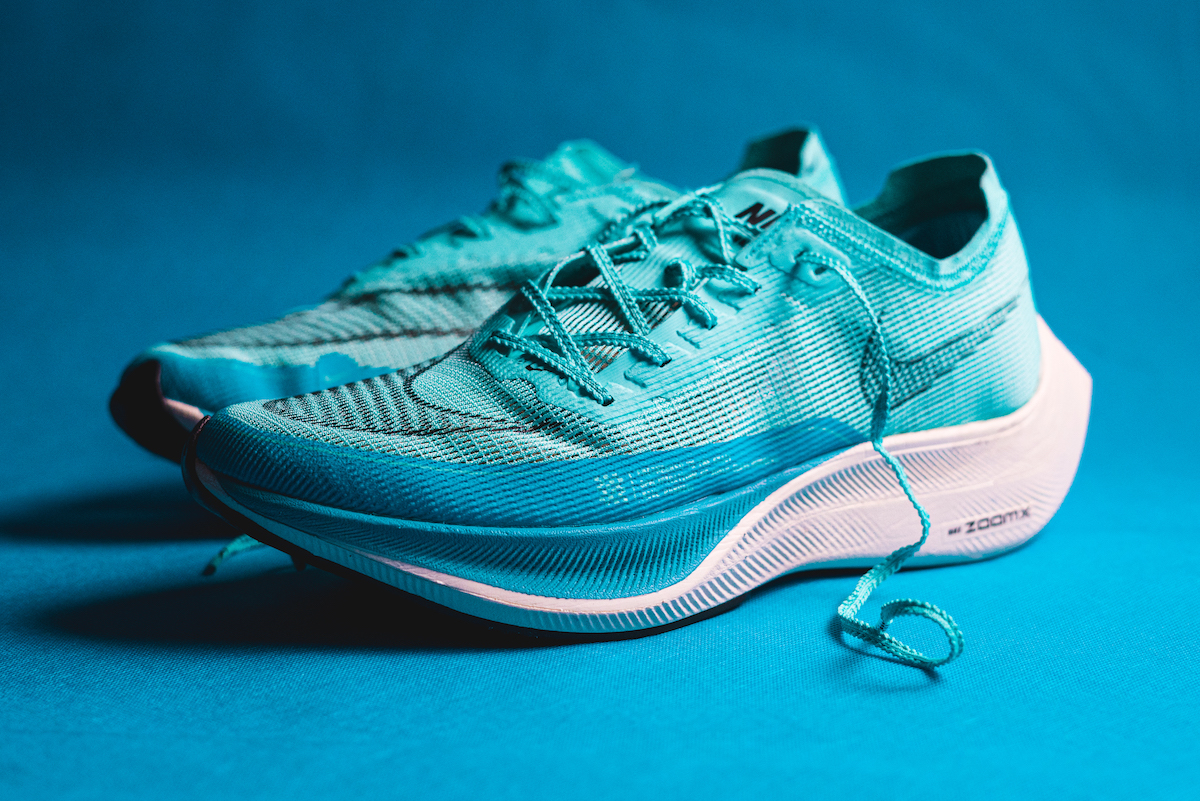
$250
All-out speed
11 oz. (311 g) for a US M10.5 2E
36 mm heel, 29 mm forefoot (7 mm drop)
The shoe that started the craze is still a gem, no matter how you cut it. For a pure racing shoe that will give you an undeniable edge without that teeter-totter feel of the Alphafly, there’s no better option than the Vaporfly Next% 2. More traditional than the Alphafly, you’ll often see it as the shoe-of-choice for elites on race day, including Eliud Kipchoge. The carbon plate, combined with the full bed of ZoomX, makes this girl sing at fast paces.
Lightweight with a snappy ride, the Vaporfly 2 gets you to the finish with legs that don’t feel beat up. Most of Nike’s changes for version two are in the upper, with a little more room in the toebox and a much more breathable design. The good news– you can often find this one on sale, so happy treasure hunting at your local Nike outlet.
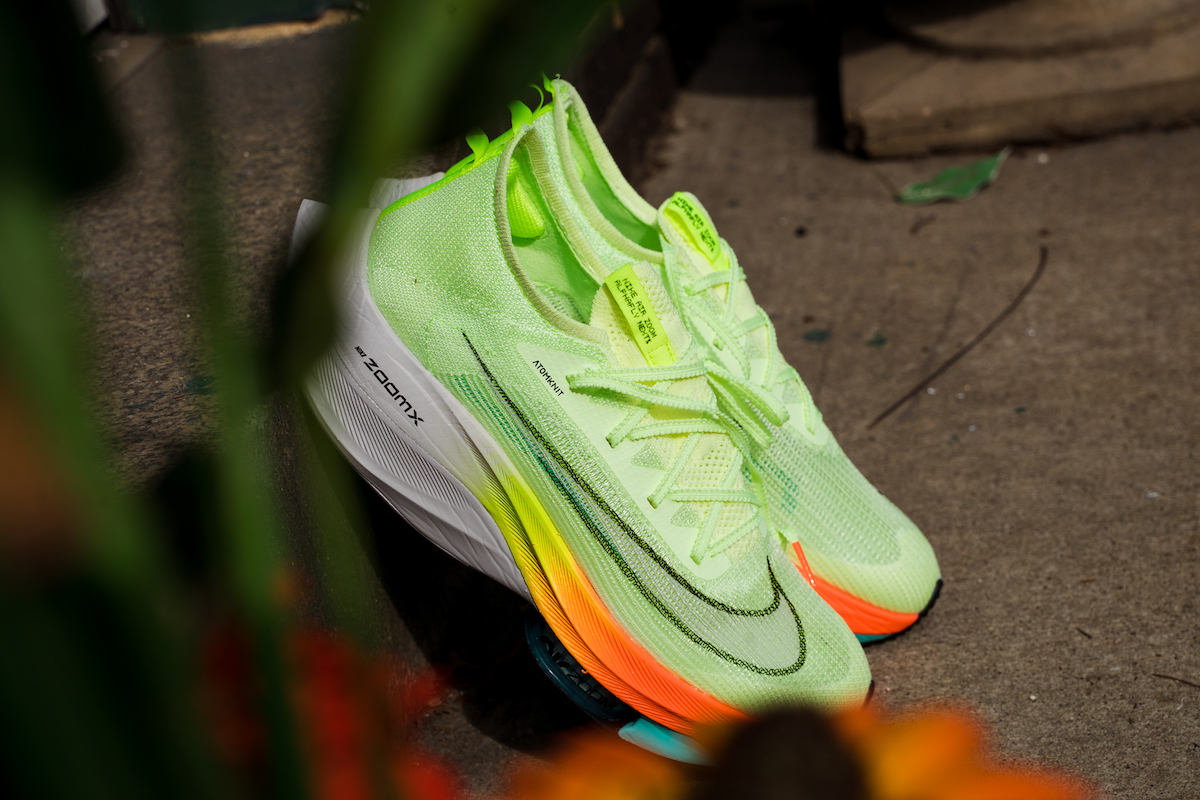
$275
Race day
8.4 oz. (240g) for a US M9.5,
7.1 oz. (201 g) for a US W7.5
40 mm heel, 32 mm forefoot (8 mm drop)
We’ll be real– we didn’t give this shoe the most glowing review when we reviewed it last year. But that’s not because it’s not a great race day shoe. I mean, it’s the Alphafly, and literally any version of it is going to be pretty great because the core foundation is unlike anything in the race world. It’s just not the original Alphafly.
It’s a more democratic version of the shoe, offering more stability and a bit more midsole above the air pods. It’s also heavier. As a result, it’s just not as exciting as v1, which is still our favorite race day shoe ever. Nevertheless, it still has a ZoomX midsole, dual Airpods, and full-length carbon-fiber plate. And, we should add– an improved upper over the original Alphafly.
Even without the magical, unlike-anything-else bounce of the first one, it’s still a great race day option, and deserves to be on this list. Especially since the Alphafly 1 is getting harder and harder to find. If you can track it down, get it, but if you have to “settle” for this one, you’re still going to be quite all right come race day.
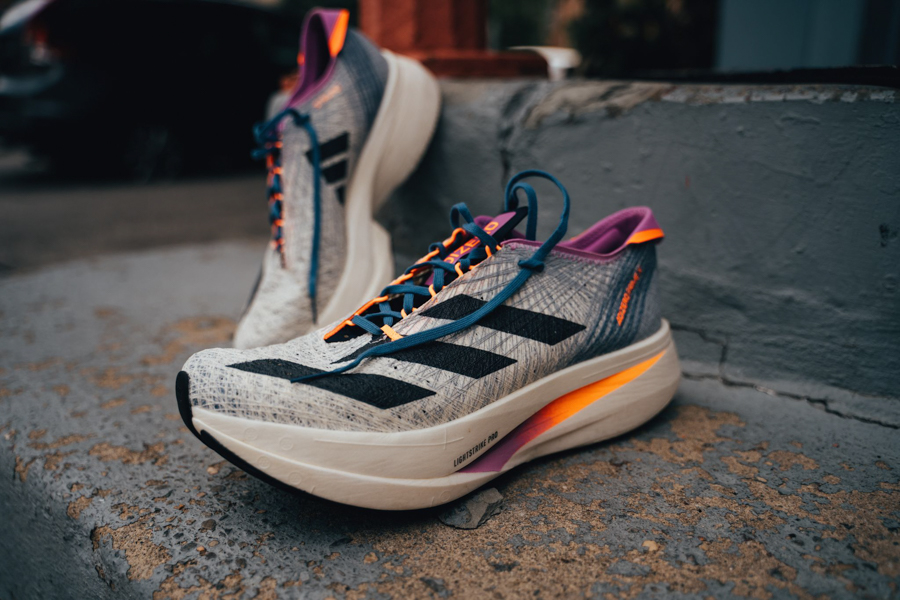
$300
Having an awesome time all the time
9.6 oz. (275 g.) for a US M10.5,
7.7 oz. (218 g.) for a US W7.5
49.5 mm heel, 41 mm forefoot (8.5 mm drop)
On paper, this is the highest stack shoe we’ve tried at almost 50 mm. Typically, that’s an instability nightmare, and the standard Prime X had us running with night sweats. But the Strung upper on this one completely changes its character and makes it one of the most fun running shoes that money can buy. Of course, you better have a lot of that thing called “money,” because it will cost you three Benjamins.
However, hear us out– it’s worth it just to try it. Combining carbon-fiber EnergyRods with an ultra-bouncy Lightstrike Pro midsole, the shoe gives a sensation that you really can’t find anywhere else. Meaghan says it’s like “wearing bouncy castles on your feet,” and we can’t think of a better description than that. And that Strung upper– which maps and programs different fiber properties thread by thread– provides the perfect fit and transforms the shoe into a surprisingly stable package.
Lastly, we’ll leave you with this teaser– the second version of this one is coming late 2023/early 2024, and we can tell you right now it will change everything. Scratch that itch before you have it.
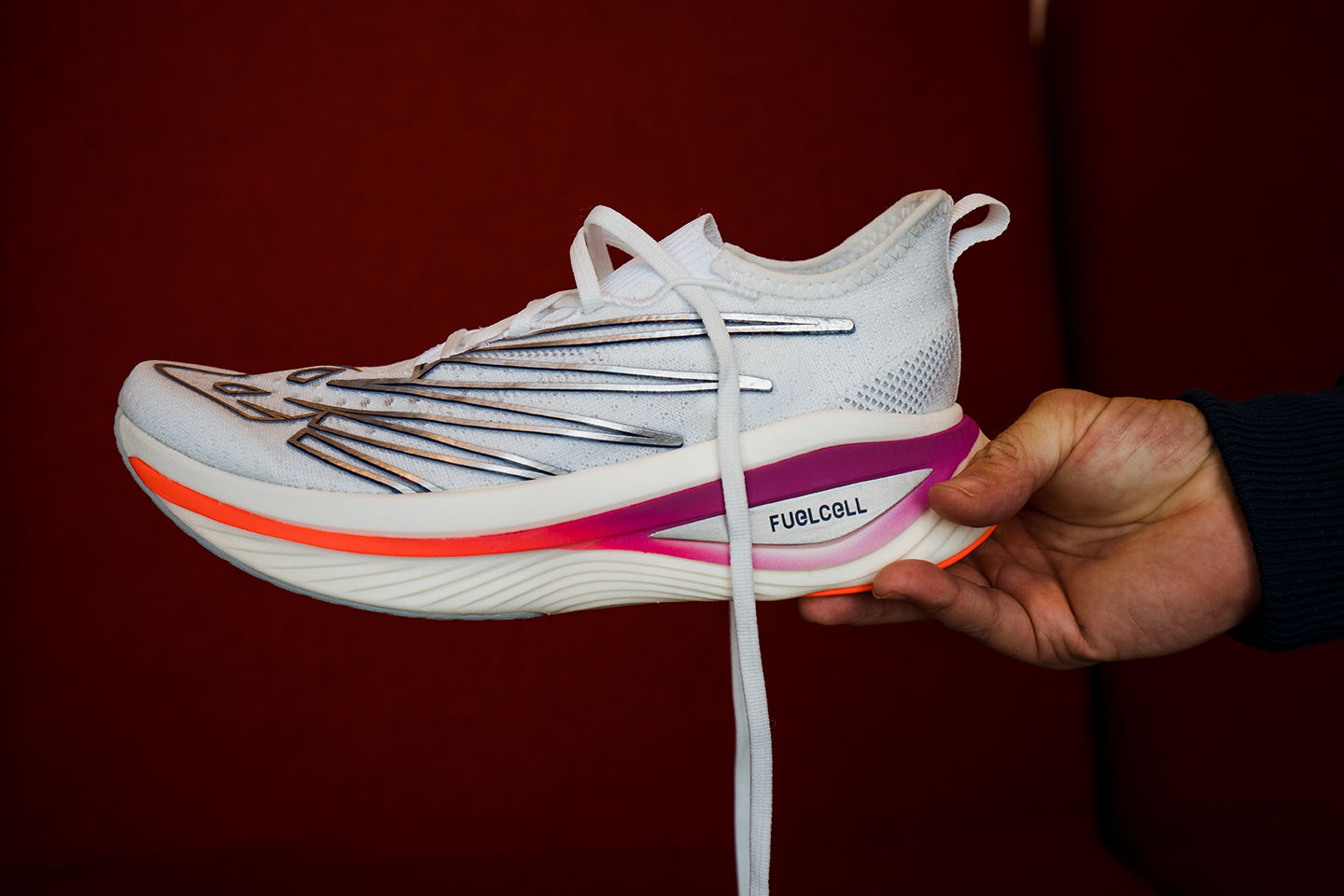
$230
Race day
7.5 ounces (212 g) for a US M8.5
40 mm heel, 36 mm forefoot (4 mm drop)
The name’s a bit confusing, because this isn’t the third version of the Supercomp Elite, in fact– it’s the first. But New Balance picked up where the RC Elite left off, and just stuck a ‘3’ on the end of the name, in an effort to streamline all their carbon-plated shoes into the Supercomp category.
While we still get the 40 mm FuelCell treatment in this one, the foam seems a little bit different. It’s not as soft as last year, though it still ranks as ‘very soft’ on the hardness scale. Overall, it seems more bouncy than the past two versions. We told you above how the SC Trainer feels like a race day shoe built for the long run; this feels like the SC Trainer built for race day. The EnergyArc carbon fiber plate (exposed underneath via a cutout channel running through the heel and midfoot) provides both stabilization to the foam and a touch of propulsion off the toe.
The sock-like upper works great for some, and not-so-great for others. The lacing system is also… interesting. The stitched in loops provide no flexibility with fit, and it’s just a poor design overall– we had one break out of the stitching walking up to the start line of the New York City Marathon and had to use a safety pin as an emergency eyelet for the entirety of the race. Only one of us had this happen, but that’s one too many.
That said, our legs felt great post-race, so there’s more than enough comfort in this shoe to take you through the marathon distance. We know plenty of people who use this as their race day shoe, so if you can get past its design flaws, you may find a winner for your next race. Also, it really does look amazing.
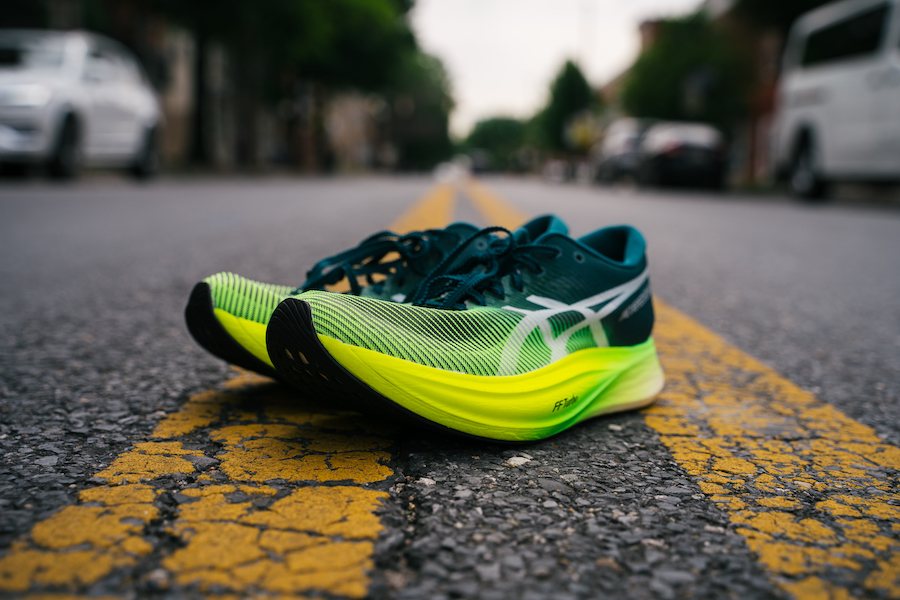
$250
Race day
7.4 ounces (210 g) for a US M9
Edge+: 39 mm heel, 31 mm forefoot (8 mm drop), Sky+: 39 mm/34 mm (5 mm drop)
The carbon-plated running shoe game is a lot like a race. Only, instead of a finish line, everyone is trying to catch up to Nike. Asics is doing a better job than almost anyone, and it’s back in the saddle with another round of the MetaSpeed Edge and Sky. We called the original MetaSpeed Sky as close to a Vaporfly as you could get, and the Sky+ is even better. It should really be called the Sky 2, though, cause there are plenty of changes afoot.
For starters, there’s more FlyteFoam Turbo (their bounciest and most-advanced midsole foam) in both the MetaSpeed Sky+ and Edge+. Not a lot — remember, 40 mm limit — but there’s more cushion for race day. Perhaps more importantly, Asics retooled the carbon plate shape to better emphasize the strengths of each shoe. The Sky+ plate sits higher in the stack, which gives more compression and a higher bounce through the stride. The Edge+, on the other hand, has a much lower plate for more of a kick forward with less bounceback. The changes still come down to whether you’re a cadence runner or a stride runner, but it’s tough to argue the results.
This one isn’t for those who love the ultra soft feeling of shoes like the SC Elite 3 or Endorphin Pro 3. But it works perfectly for runners who like an ultra-snappy toe-off and just enough ground feel. In short, you’ll feel as fast as you’re moving in this one. We’ve notched half marathon PRs in the shoe and will be wearing it for Tokyo this spring.
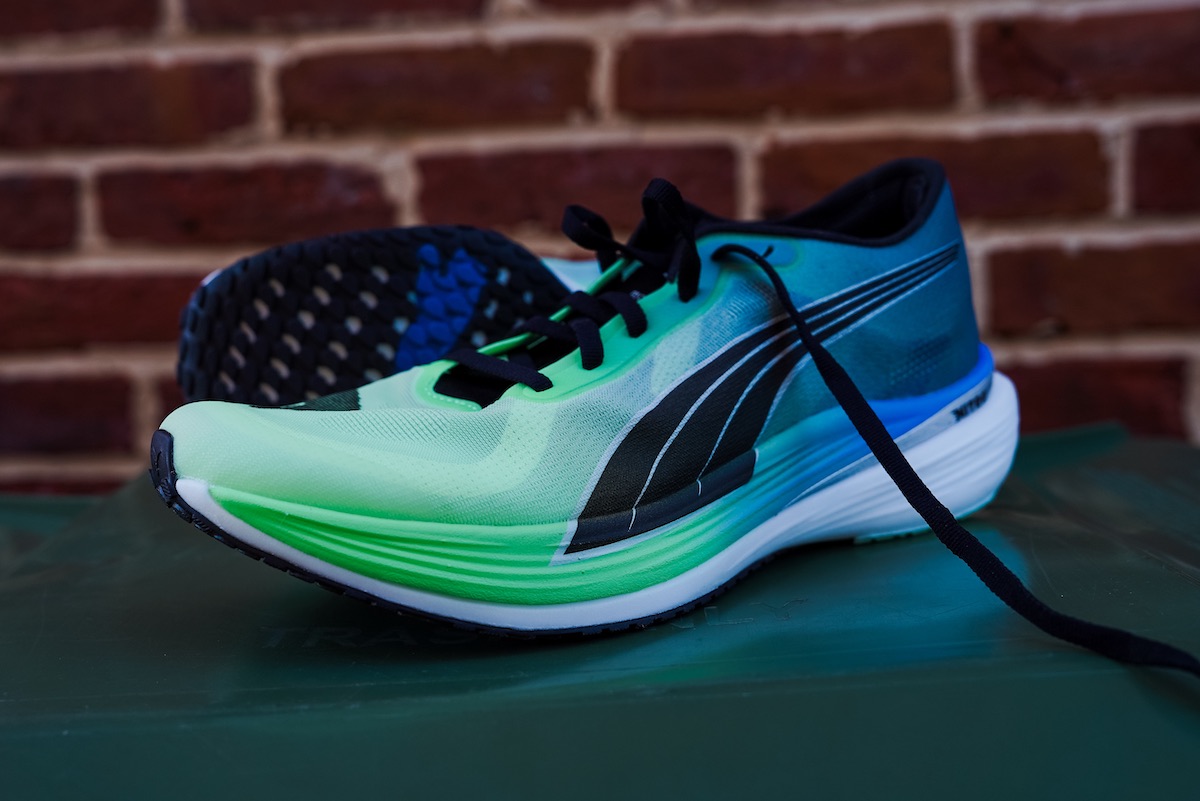
$200
Under half marathon/tempo
8.3 oz. (236 g) for a US M10.5
36 mm heel, 28 mm forefoot (8 mm drop)
The first version of this shoe was found on the feet of a certain Molly Seidel as she cruised her way to a bronze-medal finish at the 2020 Tokyo Games. And then it was nowhere to be found for like a year because Puma had about three pairs in inventory. Supply chains and production have drastically improved since then, and Puma delivered as promised on the second version, which is available now.
There are some improvements with this one over the first one, namely a re-engineered carbon fiber plate that gives a snappier toe-off. We also have a more structured upper that gives some comfort and security in the heel area that was lacking before. Of course, we still have that bouncy stack of Nitro Elite midsole foam that gives this shoe a peppy ride.
Not all is roses though– the shoe picked up an ounce over its predecessor, and Meg’s feet felt beat over the course of a fast half marathon. Could have just been an off day, or could’ve been the shoes, but either way it wasn’t the best option that day. However, since it sits at the lower end of the price range for carbon-plated racers, it could be a nice option for someone who likes a more traditional-yet-modern feel in a fast shoe.
Want to learn more about how our review process works? Check out this guide.
Have something to say? Leave a Comment

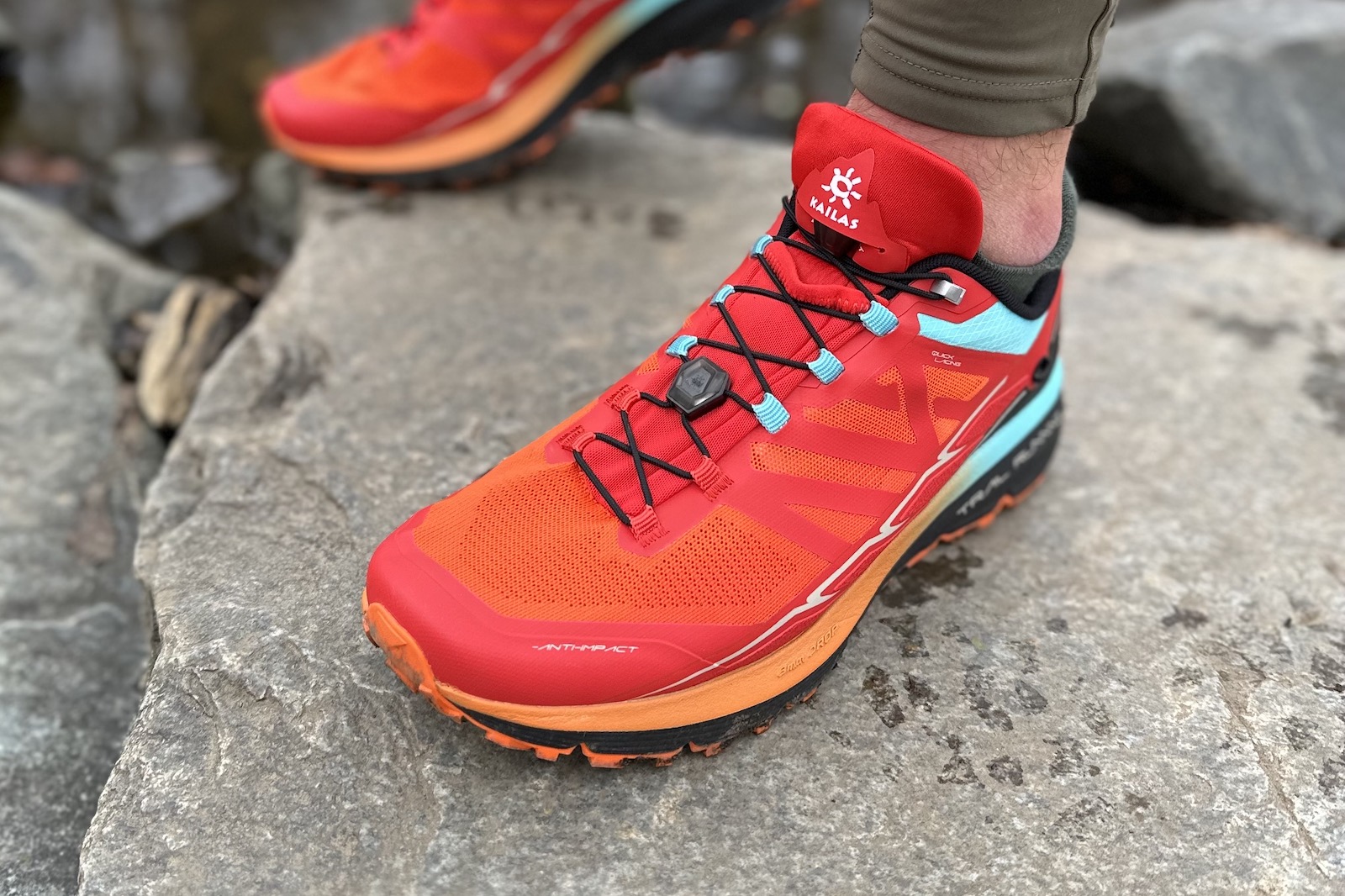
Thanks for the review! I’ve actually never bought wide-versions of shoes but leaned towards Altra and then TOPO – less boat-y all around – because it’s more forefoot width and height that I want. But TOPO has gone even shorter in its lengths and my size-13 just keeps slamming into the front.
So do “wide” sizes actually open the toe box, is it more midfoot or heel? All three? What I really crave is a fun trail shoe (Altra Superior/TOPO MT-2) that has enough volume but without my foot flying forwards. I was thinking maybe a more natural last, but at a bigger width, might work…
(Don’t worry about responding, this is all a pipe dream as my goldilocks shoe won’t exist, and I certainly didn’t manage to actually write a real question, lol)
Ha. Eventually we will all find a shoe that is perfect! I can’t answer too well to the trail stuff since I don’t get trail shoes often (just cascadia and speedgoat in past year).
As for wide shoes, yes, they should be wider (not just more upper material) in the forefoot and midfoot. I don’t think the heel really changes.
YES! Thank you for bringing the love to us duck-feet yetis. More wide, and specifically more wide toe-box commentary on reviews would be much appreciated. In general, the other reviewers give it a passing comment but it doesn’t inform much for folks like us.
You’re welcome! I’ll obviously comment on it for whatever wide shoes I get, but it’s tough for other reviewers in regular width shoes since they just don’t know.
But hey, the NB fuelcell TC is available in 2e on the NB website. At least it was, when they still had stock.
I’m 99.9999% sure it’s not made in wide. I wish it was though.
Hey Jarrett – Thank you for the review! I’ve really wanted to try the NB TC, but with my wide feet, wasn’t sure what size to go for: my usual size (hoping the toe box would be wide enough), or go up ½ a size to allow for my Yeti feet. How does the last in the Fuel Cell TC compare to other NB models? I wear a 12.5 2E in the 1080v10 and the Fuel Cell Rebel, but honestly, the Rebel is a little too short (I’ve lost the nail on my middle toe on both feet). Should I go up to a 13 in the TC? Any advice would be appreciated. Thanks!
I haven’t worn the 1080v10. As for the rebel, I think it’s the same length. So if the rebel size was too short, the tc will probably be too.
Worst comes to worst the size doesn’t fit and you return it.
Thank you so much for making this list. As a wide footer, this is always a challenge. Can’t wait for the Gel Cumulus to be readily available!
Hoping you also get a chance to try the new Nike Pegs – they have a “extra wide” option, and I’d love to hear if you’d give it your blessing.
The cumulus 22 is available in 2E wide right now on running warehouse in the black and lime colorway. If you can’t find it, you can filter all the running shoes to wide and see everything like that. It makes it much easier to see every wide shoe available.
I’m not sure I’ll get a chance to try the peg 37. It’s interesting that Nike has it in extra wide, but you can customize your own peg and then the wide option is a choice.
How about some Topo love?
Love this!! One note though, the Vaporfly is marked as a stability trainer, I’m guessing that’s an error right?